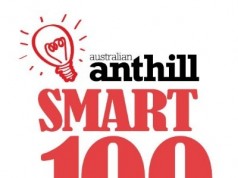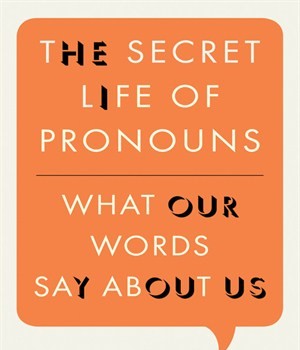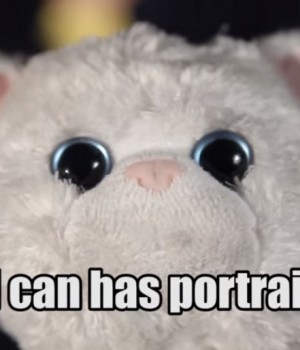Like this innovation? Show your support by tweeting it, ‘liking’ it on Facebook, or leaving a comment below.
1. THE BEGINNING
This innovation came to life when…
The group started out as part of Matt Barrie’s (CEO, Freelancer) and Bill Bartee’s (VC, Blackbird) Tech Venture Creation class at the University of Sydney. After coming up with the idea roughly seven weeks in, we pitched at the NSW Pearcey Awards and came third, prompting us to continue with this innovation and idea. We got into the University of Sydney Union incubator program Incubate and have been creating the Edisse Watch ever since.
2. WHAT & HOW
The purpose of this innovation is to…
Each year, one in three people over the age of 65 experience a fall which results in injury. Panic buttons are limited in two major ways: firstly they require a manual push and secondly they only work within the home.
It does this by…
The Edisse Watch is an automatic panic button with fall detection capabilities built into the form factor of a watch. If someone fell over, the watch would automatically notify the relevant carer of the location and that someone had fallen. Add in global coverage and data analytics and carers have very good tools for taking care of the elderly.
3. PURPOSE & BENEFITS
This innovation improves on what came before because…
The Edisse Watch essentially automates what was manual before. In addition to this, it has an increased range through usage of different technologies as well as addressing a key problem — aesthetics. A problem with the elderly is that they refuse to use products that make them look less able, but a watch fits in perfectly with normal life.
The benefits to the customer/end-user include…
Wearers regain independence by knowing that they can wear the watch without looking less able and get adequate aid quickly. Carers and family members will have peace of mind knowing their loved ones are safe.
4. COMPETITIVE LANDSCAPE
In the past, this problem was solved by…
Panic buttons were used in the past. They required the user to push an actual button which enabled two-way communication or gave a signal that someone needed help. This model was limited in location and required someone to push the button. Fall detection systems work in a similar way where they are restricted by location and require a base station.
Its predecessors/competitors include…
VitalCall who are a back-to-base monitoring system. Standard fall detection units which only work within the house, panic button pendants which are attached via bluetooth to phones which the elderly are expected to carry with them.
5. TARGET MARKET
This innovation is made for…
In Australia alone there are 3 million people over 65. One in three fall (that is 1 million people). Out of those people, roughly 22% use panic buttons and are paying roughly $30p/m. This gives a viable market of $130 million. In the US, the market is even bigger at $1.4 billion. If you factor in the ageing population, you’re looking at a $1.74 billion market in the US in 2020.
6. DISTRIBUTION STRATEGY
It is available for sale through…
Distribution channels will be through nursing homes, hospitals, residential agencies and larger organisations.
Our marketing strategy is…
Through two mediums — online and offline platform. The offline platform includes radio, TV, hospitals and nursing homes. Online includes partnering with notable elderly publications, online advertising as well as pushing our brand through the use of social media.
Your Turn — VOTE!
If this SMART 100 innovation wowed you, why not get the word out?
- Tweet it: Top left of each page
- Trigger a Reaction: Facebook ‘Like’, etc.
- Leave a Comment: Anonymous comments excluded.
We’ll use your vote to create the 2013 SMART 100 Readers’ Choice Index. Learn more here!
FINE PRINT
This SMART 100 profile and the information it contains is a duplication of content submitted by the applicant during the entry process. As a function of entry, applicants were required to declare that all details are factually correct, do not infringe on another’s intellectual property and are not unlawful, threatening, defamatory, invasive of privacy, obscene, or otherwise objectionable. Some profiles have been edited for reasons of space and clarity.





![Five essential ingredients for a humming homepage with James Tuckerman [FREE REPORT]](https://anthillonline.com/wp-content/uploads/2015/07/homepage-checklist-1680-01-copy-300x194.png)
![The Facebook Honey Trap with James Tuckerman [CHEAT SHEET]](https://anthillonline.com/wp-content/uploads/2015/11/Screen-Shot-2015-11-26-at-11.34.14-100x75.png)
![Generating Web Traffic with Mark Middo and James Tuckerman [FREE REPORT]](https://anthillonline.com/wp-content/uploads/2015/08/Capture3-100x75.jpg)
![Need more leads? Here are five strategies [FREE DOWNLOAD]](https://anthillonline.com/wp-content/uploads/2016/04/james-FIVE-SIMPLE-STRATEGIES-TO-GET-MORE-LEADS-01-06.pdf-Box-2016-05-13-15-49-32-100x75.png)
![Learn how to devise winning business ideas in four steps with Martin Martinez [CHEAT SHEET]](https://anthillonline.com/wp-content/uploads/2015/07/Screen-Shot-2015-11-26-at-13.44.27-100x75.png)
![Inbound Marketing Reloaded with James Tuckerman [FREE REPORT]](https://anthillonline.com/wp-content/uploads/2015/07/cover-3d-347h-x-253w--100x75.png)



![Nike’s World Cup ad has a very powerful marketing lesson [VIDEO]](https://anthillonline.com/wp-content/uploads/2014/06/Nike-World-Cup-2014-The-Last-Stand-300x350.jpg)
![Ever considered crowdfunding? [FREE REPORT]](https://anthillonline.com/wp-content/uploads/2017/03/liz-wald-300x194.png)
![How to build a retail empire with James Webber [FREE REPORT]](https://anthillonline.com/wp-content/uploads/2015/06/james-webber-instagram-memes-01-100x75.jpg)
![Strategic Alliances with Simone Novello [FREE INFOGRAPHIC]](https://anthillonline.com/wp-content/uploads/2015/08/Capture6-100x75.jpg)
![New Zealand’s Xero eyes US IPO, further disruption as subscribers increase [INFOGRAPHIC]](https://anthillonline.com/wp-content/uploads/2014/07/sruuuuujana-212x194.png)
![Ever wonder if your ‘content marketing’ is really just crap? You gotta see this! [INFOGRAPHIC]](https://anthillonline.com/wp-content/uploads/2014/08/content-100x75.jpg)
![7 Business Lessons From Game of Thrones [INFOGRAPHIC]](https://anthillonline.com/wp-content/uploads/2014/10/infographic-games-of-thrones-041-100x75.jpg)
![How to build your own Media Empire… In seven steps with Nathan Chan [INFOGRAPHIC]](https://anthillonline.com/wp-content/uploads/2014/10/Nathan-Chan-Infographic-e1413419529176-100x75.jpg)
![5 Business Lessons From Tinder [INFOGRAPHIC]](https://anthillonline.com/wp-content/uploads/2014/10/Tinder-Elegant-Infographic-100x75.jpg)



